INTRODUCTION
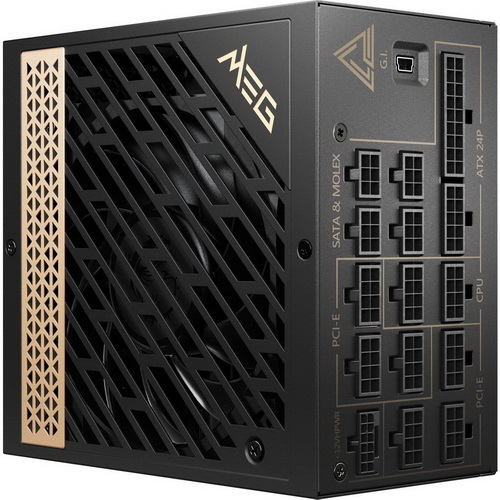
With just a few months left before both NVIDIA and AMD announce their upcoming CPU and GPU lines (motherboard chipsets as well) as expected there's an increasing interest by consumers for the latest PCIe 5.0 & ATX 3.0 compatible power supply units. This of course is to be expected, the new PCIe 5.0 & ATX 3.0 models are not just ideal for PCIe 5.0 systems due to their improved specifications over their predecessors (not to mention the addition of the new +12VHPWR 600W cables), they are also quite "greener" since they help reduce power consumption. MSI with their MEG AI1300P PCIe 5.0 & ATX 3.0 ready power supply unit was among the very first companies to support such systems and today after quite a few reader requests that's exactly what i have in the lab with me.
MSI is a world leader in gaming, content creation, business & productivity and AIoT solutions. Bolstered by its cutting-edge R&D capabilities and customer-driven innovation, MSI has a wide-ranging global presence spanning over 120 countries. Its comprehensive lineup of laptops, graphics cards, monitors, motherboards, desktops, peripherals, servers, IPCs, robotic appliances, and vehicle infotainment and telematics systems are globally acclaimed. Committed to advancing user experiences through the finest product quality, intuitive user interface and design aesthetics, MSI is a leading brand that shapes the future of technology.
The MEG line of PCIe 5.0 & ATX 3.0 power supply units includes just 2 units (1000/1300W) both of which sport the 80 PLUS Platinum certification (up to 92% electrical efficiency) along with active PFC and half bridge LLC topology (DC to DC design) for optimal performance. It also comes ready with 8 PCIe 6+2 connectors, single 12VHPWR (600W) connector, powerful single +12V rail (108.33A - can switch to multi rail mode via MSI Center) capable of delivering the units’ entire power output (1300W) and a peak power output of no less than 1448W (up to 2.6KW for 100ms according to ATX 3.0 specs – this is not something I can test however). Secondary features include strong minor rails with a total output of 148W, compact size, sleeved cables, 120mm HDB (hydro dynamic bearing) silent gale fan with liquid crystal polymer blades (zero fan mode by default - can adjust speed via MSI center) and 100% Japanese capacitors certified for use up to 105 degrees Celsius. As for available electrical protections the MEG AI1300P packs them all including over-current (OCP), over-voltage (OVP), under-voltage (UVP), short-circuit (SCP), over-temperature (OTP) and over-power (OPP). As with other similar models by MSI the entire MEG PCIe 5.0 line is covered by a very generous 10-year limited warranty.
SPECIFICATIONS AND FEATURES

PACKAGING AND CONTENTS
MSI uses a black box to ship the MEG series the front of which contains a product picture, the company logo and the main product features.
Another product picture is placed on the right side of the box just over a sticker with the serial and part numbers and barcodes.
Contact information for MSI along with numerous certifications are all placed at the bottom of the box.
Turning the box around we find the product features, electrical table and available power connectors.
Typically, the power supply is wrapped inside a plastic bag and placed between two pieces of foam whereas the power cables are placed inside a storage pouch.
Along with the MEG AI1300P, its power cord and modular power cables inside the box you'll also find 4 mounting screws, several pieces of plastic used for cable routing and a piece of paper showcasing the proper way to use the 12VHPWR cable.
THE MEG AI1300P PCIE5 EXTERIOR
All modular cables bundled with the MEG AI1300P feature individually sleeved cables but the 12VHPWR has all of them together.
For a 1.3KW unit the MEG AI1300P is very compact measuring just 160mm in length, 150mm in width and 86mm in height.
The 120mm fan sits right beneath a nice looking grill that has the MEG logo on one of its corners.
Both the MEG and company logos are placed on the sides of the enclosure.
I was a bit surprised to see that these are magnetically attached (thus you can remove them entirely - would be nice had MSI also provided different color pieces in the bundle).
As expected, the electrical table is placed on a sticker at the belly of the unit.
There are a total of 15 modular connectors on the MEG AI1300P all of which are tagged and divided into sections. Here we also see the mini USB port which is needed to use the MSI center software.
Moving at the rear we find the usual honeycomb perforation along with the on/off power switch, power port and the MEG logo.
THE MEG AI1300P PCIE5 INTERIOR
The 120mm HDB silent gale fan is manufactured by PowerLogic and according to MSI Center it can spin up to 2500RPM.
CWT (Channel Well Technologies) is the OEM behind this PSU and as you can see build quality and layout are very good.
Both primary capacitors are manufactured by the Japanese nichicon and are certified for use up to 105 degrees Celsius.
All secondary capacitors are manufactured by Rubycon and Nippon Chemi-Con and are also certified for use up to 105 degrees Celsius.
MSI CENTER
If you’d like more control over the MEG AI1300P I strongly suggest downloading MSI’s center software.
Unfortunately, the software didn’t seem to like my rather old test rig, not only was power consumption off (other numbers are set to zero) but temperature was also set at 100 degrees at all times.
Compatibility aside however (this is a very old system after all) as you can see via the MSI Center software you can switch between single and multi-rail mode, adjust fan speed and monitor the PSU via a real-time dashboard.
TEST BED


TESTING METHODOLOGY
Using a dedicated measurement instrument such as a Chroma or a SunMoon to test power supply units is without doubt the most ideal and accurate way (not to mention the fastest) to do that currently. However, it's certainly not the only way there is and so pretty much anyone can test a power supply unit just by using a test rig. Certainly, limitations do apply and so you can't really push a 1000W power supply to its limits if your system only uses 500W at peak loads and that's why over the years we saved certain hardware components for the purpose of building a dedicated PSU test rig. True it may not be as accurate as the above mentioned solutions but it comes really close and is in fact much closer to real world usage. So as always, we ran several games with maximum graphic options enabled at a resolution of 2560x1600 in order to stress every hardware component and increase the overall power demands of the system. The Passmark BurnIn Test was also used to overstress the components in an effort to provide the most accurate results possible. As a final test we also used the latest OCCT 4.4 software and its dedicated PSU testing suite since it can really bring a power supply to its knees after inside a few minutes.
Rail stability was checked/measured with the CPUID Hardware monitor and a Metex multimeter which also recorded the system load in idle and in load. As always try to remember that the power consumption numbers listed in the graph are the highest (Peak) ones recorded during the entire duration of the tests and not the average ones. Noise levels coming from the fan were recorded using the high precision HD600 ExTech Sound dBA Meter from the rear of the unit and at a range of no more than 5-10cm. Readings under load are recorded the exact moment we manually switch the fans of all graphics cards from full speed to almost zero, that way the fan of the power supply does not have enough time to slow its RPM and so by doing this we get very accurate noise level readings. Needless to say, in order to get 100% accurate readings, you need to have a noise isolated room for that exact purpose, something which is quite impossible unless you are working inside a real lab (some people use very small noise insulated boxes but due to their size both heat and noise exceed normal levels and so the results can't really be considered to be 100% accurate, nor realistic for that matter). Also do take into account that since all noise measurements take place from just 5-10cm away the final noise levels to reach your ears will be considerably less.
* After well over 10 years of testing PSUs the Intel Core i7-920 CPU of this rig failed and so we replaced it with a Xeon X5660 (we also swapped the GA-X58A-UD7 for the G1. Assassin).
TEST RESULTS



CONCLUSION
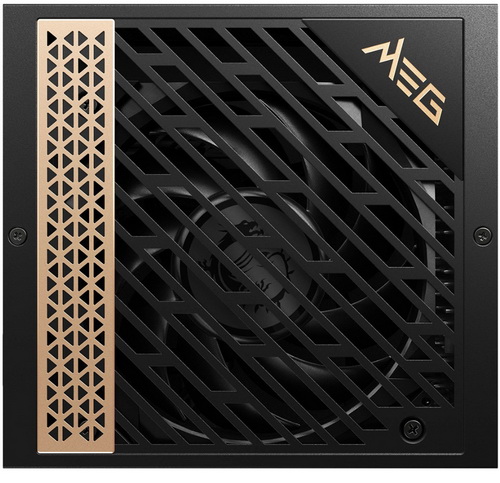
By using a long established company like CWT for their MEG series of PCIe 5.0 & ATX 3.0 ready power supply units MSI currently has a solid competitor in the global market. Once again, my test rig may not have been power hungry enough to max out the output of the AI1300P but at least at just over 1000W under load the unit produced rock solid rails with less noise compared to other similar models (needless to say, at full load noise levels will be higher). On top of that add the size of the MEG AI1300P which is considerably more compact compared to other units and there’s simply no way you can go wrong with it. Now if I had to nitpick (as l always do) I’d have to point out the lack of a zero-fan mode switch/button at the rear of the unit which was a surprise to me (every other unit sporting that feature to arrive in the lab to date has it). Yes, this is not a big deal honestly but since i happen to always have that feature disabled (not taking any chances with temperatures) it’s safe to assume that others do too and so having to download and use MSI center to get around that (and not completely since you have to manual set the RPM) is certainly not ideal. As for the MSI center software even though it didn’t work well it wasn’t something unexpected, not for a test rig which is roughly 13 years old. What does matter is what that software offers and switching between single and multi-rail (not to mention adjusting fan speed) is not something we see in the PSU market almost at all.
Currently retailing for USD319.99 inside the USA (Amazon.com) and for 306.34Euros inside the EU (Amazon.de) the MEG AI1300P PCIE5 power supply unit is priced right around what I was expecting for the top model by MSI. Overall, the MEG AI1300P PCIE5 by MSI is a great power supply unit, not only does it produce rock solid rails with less noise compared to similar models, it’s also more compact and has features which can be controlled via MSI’s Center software (multi-rail, fan speed) so the Platinum Award is definitely in order.

PROS
- Very Good Build Quality
- Solid Rail Stability
- ATX 3.0 & PCIe 5.0
- 80 Plus Platinum Certified
- 1300W Output (+12VHPWR 600W Connector)
- Electrical Protections (OCP/OVP/SCP/OPP/UVP/OTP)
- Noise Levels
- Multi & Single Rail Mode (Via MSI Center)
- Zero Fan Mode
- MSI Center Software
- 10 Year Limited Warranty
CONS
- Fixed Zero Fan Mode (No Rear Switch)

 O-Sense
O-Sense





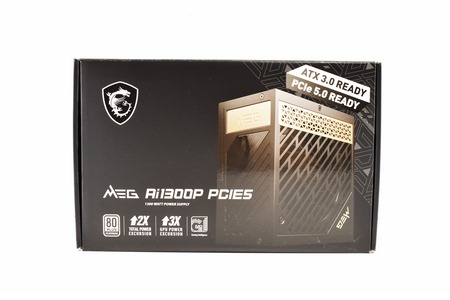

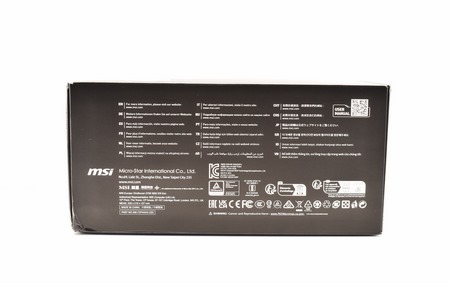
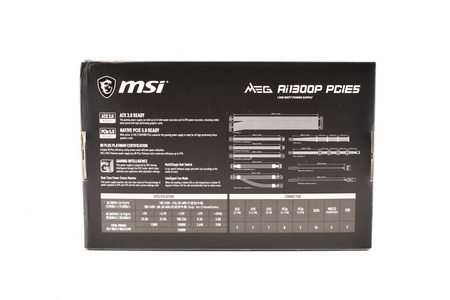
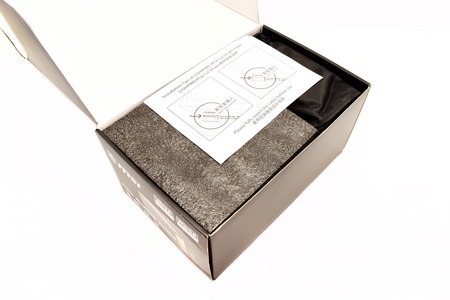
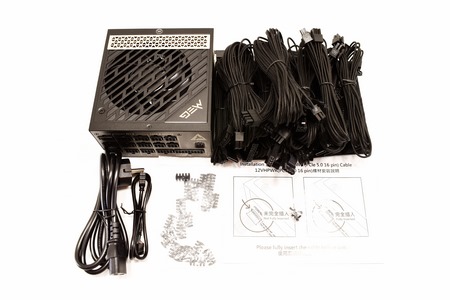
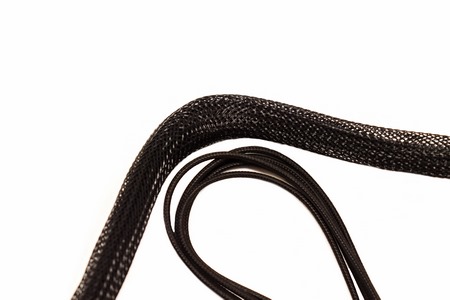
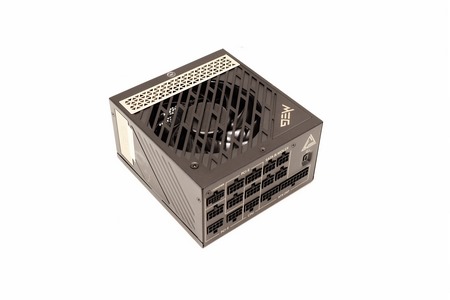
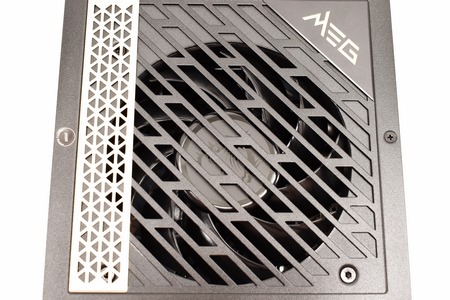
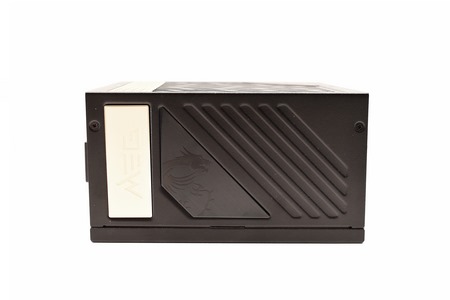
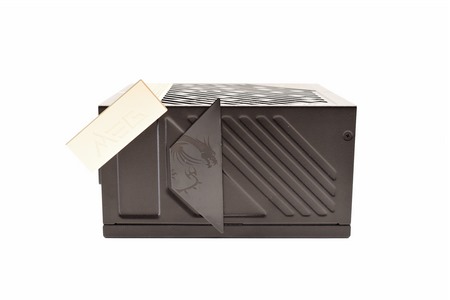
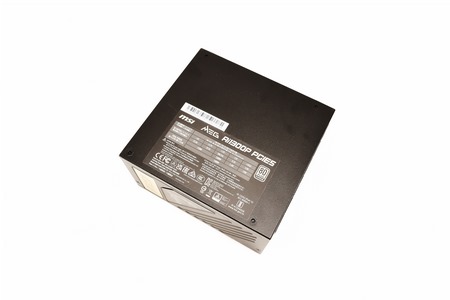

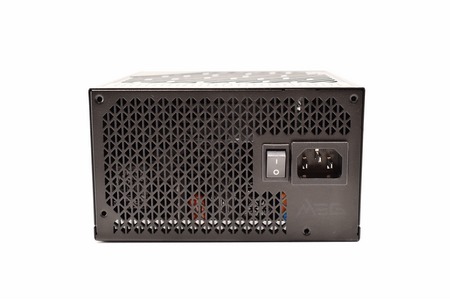
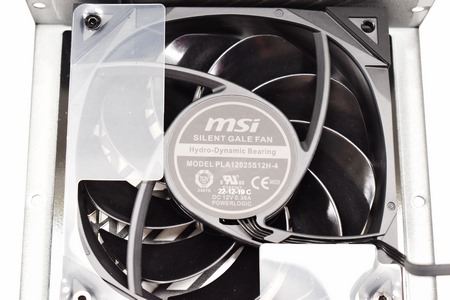
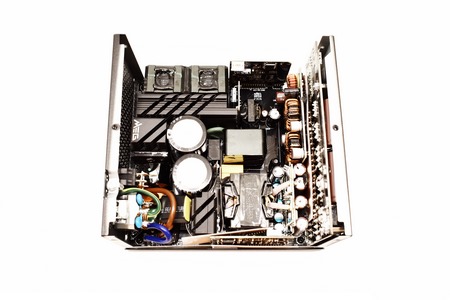
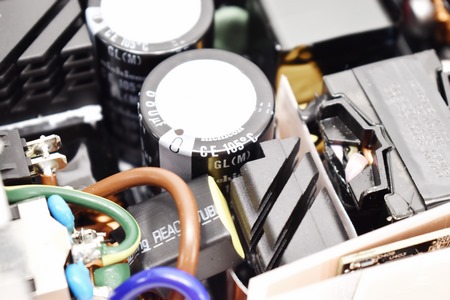
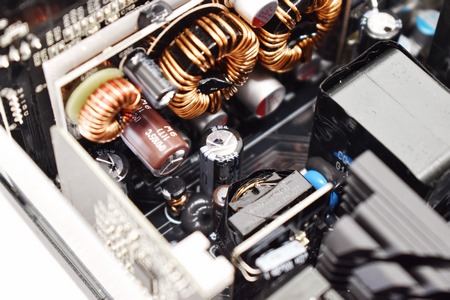
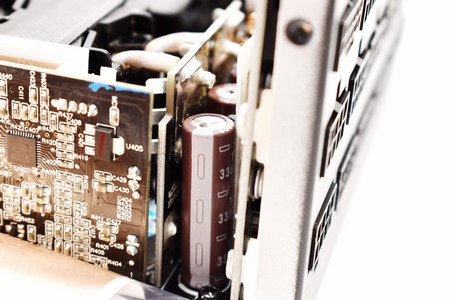
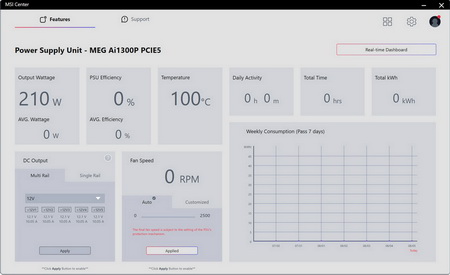
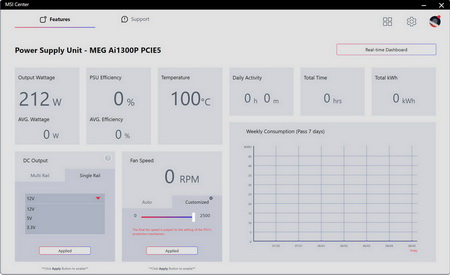


.png)

